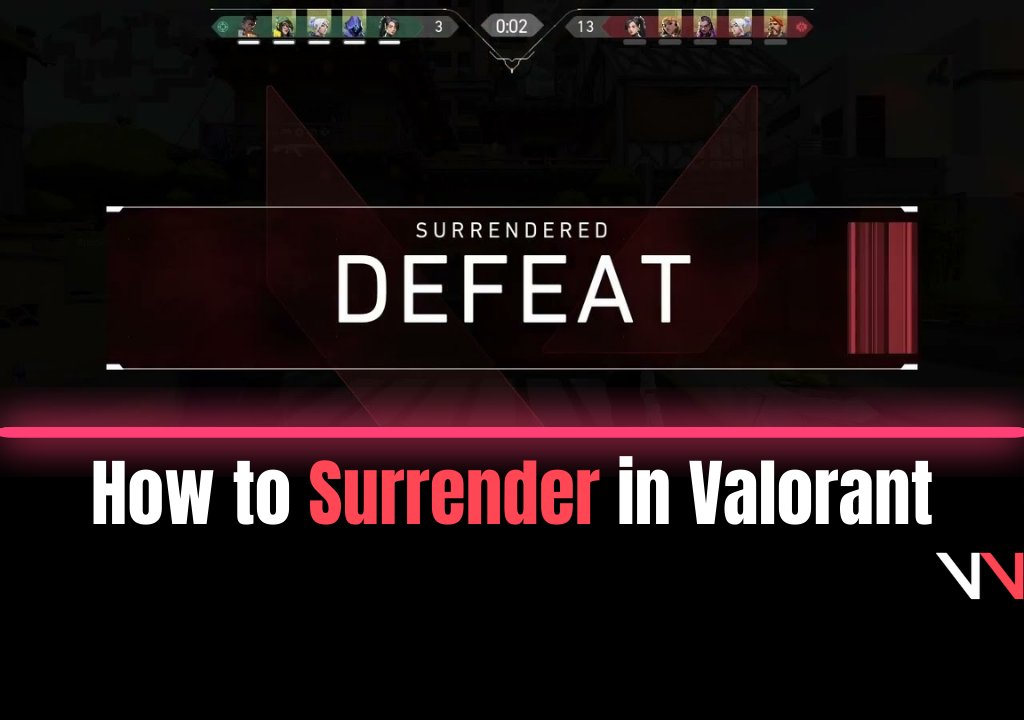How to Surrender in Valorant
Valorant is known for its highly competitive and intense gameplay. But sometimes, no matter how hard you try, things just don’t go your way. Whether it’s poor team coordination, an AFK teammate, or a lopsided matchup, there are situations where continuing a match feels like a waste of time. In such cases, knowing how to surrender in Valorant is crucial—it lets you exit the game respectfully and without facing penalties.
This guide explains how to surrender properly, when it’s allowed, the voting requirements, and the impact surrendering can have on your competitive progression.
How to Surrender in a Valorant Match
There are two main ways to initiate a surrender vote in Valorant:
- Use Chat Commands – Type one of the following into your chat window:
- /ff
- /surrender
- /concede
- Use the In-Game Menu –
- Press Escape (Esc) to open the menu.
- Scroll to the team volume section.
- Click the Surrender button.
You can only call a surrender vote starting from the 5th round of the match. Once initiated, a surrender prompt appears on the screen. All players can vote “Yes” (F5) or “No” (F6). The player who starts the vote automatically votes “Yes.”
Surrender Vote Requirements in Valorant
The requirements for a successful surrender vote vary by game mode:
- Competitive Mode:
- Requires a unanimous vote. All five teammates must vote Yes for the match to end early.
- Unrated Mode:
- Requires only four out of five votes to pass.
- Deathmatch & Spike Rush:
- Surrender options are not available in these modes.
If a player does not vote, it is automatically counted as a “No”, so participation matters.
Once the vote passes, the match ends at the start of the next round. For example, if the vote succeeds in Round 8, the game will end before Round 9 begins.
Consequences of Surrendering in Valorant
Before using the surrender feature, it's important to understand the penalties and outcomes:
- In Competitive Matches:
- All unplayed rounds are counted as losses, which will negatively affect your rank rating (RR). Surrendering should be considered only in extreme situations, such as multiple AFKs or encountering cheaters.
- Experience Points (XP):
- You still earn XP for the rounds completed before surrendering. In Team Deathmatch, XP is calculated based on time played, not rounds.
- Match History:
- Surrendered matches will be displayed with a “Surrendered” tag and recorded as a loss.
When Should You Surrender in Valorant?
Surrendering can be tempting, but it should be used strategically:
- Valid Reasons to Surrender:
- A teammate goes AFK early in the game
- Obvious cheaters
- Multiple disconnections
- Extreme team imbalance (e.g., 1v5)
- When You Should Fight On:
- You're in Competitive, and ranking points are on the line
- There’s still a chance to turn the match around
- Your team is communicating and adjusting strategies
Keep in mind that comebacks are common in Valorant. A 2–10 deficit isn’t the end—many teams turn it around after switching sides. Surrendering too early may cause you to miss out on valuable gameplay experience.
What About Remaking a Game in Valorant?
If a player on your team goes AFK during Round 1, you may be able to remake the match entirely. This is different from surrendering and avoids a loss:
- To remake:
- Type /remake in chat at the beginning of Round 2
- All teammates must vote Yes for the remake
- The match ends without impacting MMR or XP
This feature exists to protect players from starting matches with an unfair team setup.
Curious About Your Hidden MMR in Valorant?
Track your true performance and rank progression with precision at mmrvalorant.com. This free tool gives you instant insights into your estimated MMR, match history, and rank trends, helping you understand how close you are to ranking up—or down. Perfect for competitive players who want to stay informed and make smarter decisions each game.
Tags
Jettor
Author



